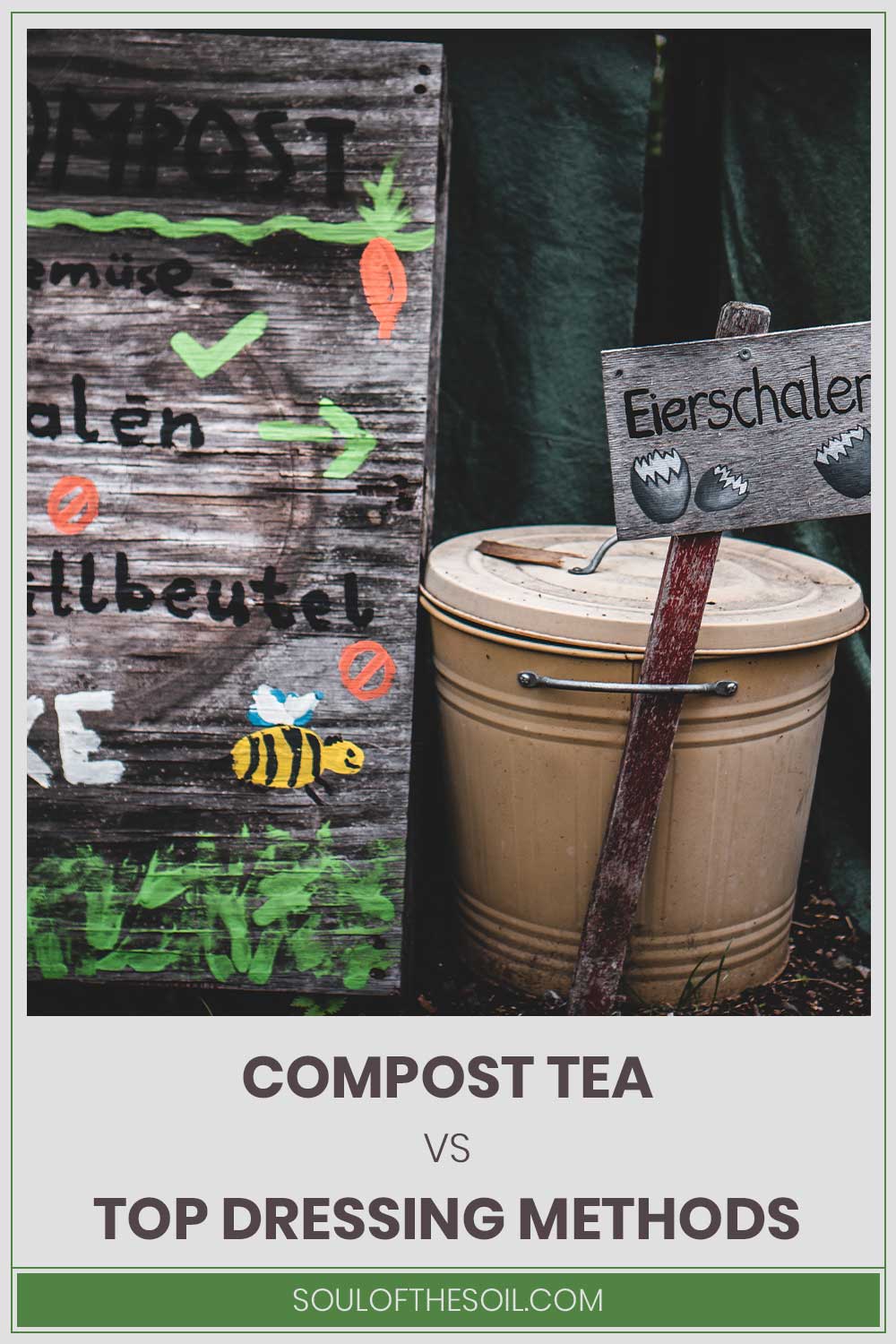Compost Tea vs. Top Dressing Methods
We may earn commissions for purchases made through links on our site. Learn more on our about us page.
The interesting thing about compost will be seemingly innumerable. There are simple ways to utilize the natural processes and nutrients from a healthy compost range outside of using the soil.
Of course, this is referring to the compost tea method, which is, as it sounds, a bag full of compost dirt that is placed in a designated water source and cultivates all those healthy bacteria, fungi, and other organic matter and creates what farmers call, “liquid gold.”
The top-dressing method is more of a blanketing technique, where the farmer or gardener will spread a quarter-inch to half-inch thick layer of compost on top of their lawns.

What are the Differences?
These two techniques are completely different in how they are created after the composting process and how they are used.
Top dressing is a basic and very simple process in which you can use manual tools, such as a shovel and wheelbarrow, to spread a thin layer of nutrient and nitrogen-rich soil over a patch of earth for plant growth intentions.
Compost Tea is a process of creating a batch of super nutrient-rich water, which is then used to feed plants, and trees, to which these living things can soak up all that good stuff.
What are the Similarities?
One of the things that both forms of compost usage do similarly would be in the way they bolster plant root health, provide much-needed nutrients and nitrogen, and come from the same composting processes.
Another similarity to point out would be the way these two resources are spread across the land. For example, top dressings will be about a quarter to a half-inch thick, while compost tea can be spread similarly but with a hose or other water, delivery means.
Pros and Cons: Compost Tea vs. Top Dressing
When you consider the compost tea, it will be a farmer’s liquid gold, and the pro is how rich this watering source is with much-needed nutrients and the ease with which it can be spread.
The con will be that you have a contaminated water source, still, water normally, which can attract mosquitos and be unhealthy or potentially dangerous for livestock or other animals to drink from.
Top dressing cons will be simpler if we focus on the labor-intensive nature of spreading such materials over lawns, especially ballfields and large lawns.
The pros will be in the inexpensive nature of creating and then using compost soils. For the most part, starting and maintaining a compost heap is nearly a zero-cost process.
Which One is More Common?
Let us split this into two different demographics, farmers and common folk.
When you think about how farmers water and plant their crops, you can see how easily you can get compost tea spread across vast fields with those sprinkler systems and hopefully a deep pool of compost tea water.
That being said, farmers and large-scale agricultural businesses are better suited to using the watering systems, making compost tea more common in these communities.
As for the common folk, there is not as much space needed to cover, nor places to have a pool of compost tea, and it is just not feasible.
Top dressing techniques will be more prevalent, even when working on local municipal buildings’ lawns and school ballfields or just simply working on a home’s patch of green.
Which One is More Efficient?
This is going to be a tight race, and both will provide exactly what a landscaper, gardener, or other agricultural professionals might need. To break the tie, let us examine the labor needs to use and work with these two different types of rejuvenation processes.
Working with compost tea is rather easy, and all a person needs to do is water the plants using this nutrient-rich water source.
However, when you consider the labor-intensive nature of working with compost in dirt form, the hours it takes to spread it evenly, and the inefficiency that comes with the inability to spread the nutrients evenly due to the nature of dirt.
Final Thoughts on Compost Tea vs. Top Dressing Methods
With all this information, do not go rushing to dig a compost tea pool. However, there are certain steps you should take before rushing to this method. First, most households are on less than an acre plot, reducing the labor time needed to effectively spread the compost.
Now if you are a novice farmer or gardener, it is highly recommended to work with local florists and knowledgeable veteran green thumbs on where to place such a compost tea pool; there are dangers to workers, animals, and equipment to take into consideration.
Doing these steps will ensure the safety and longevity of the liquid gold pool.



Leave a Reply
You must be logged in to post a comment.